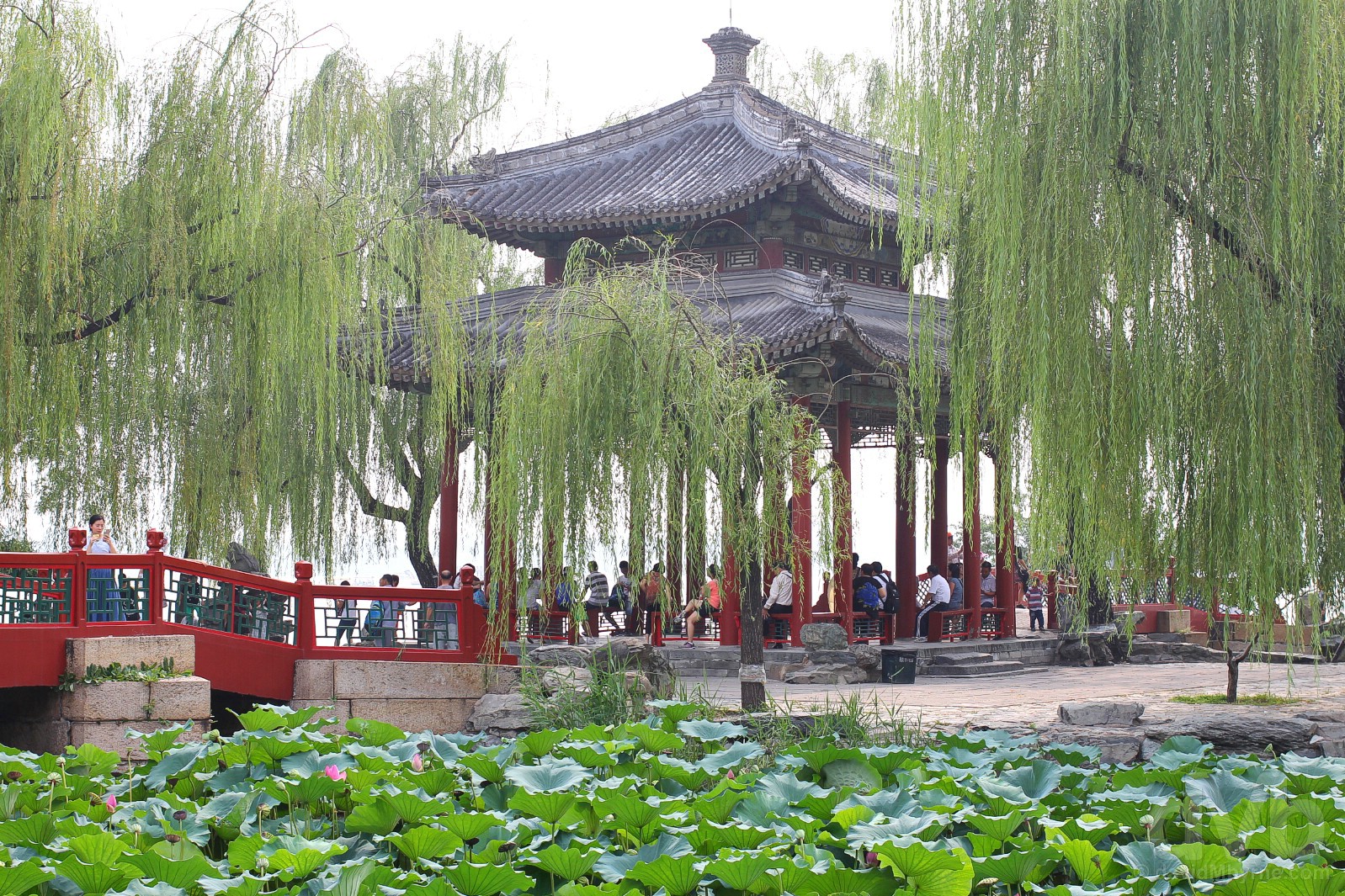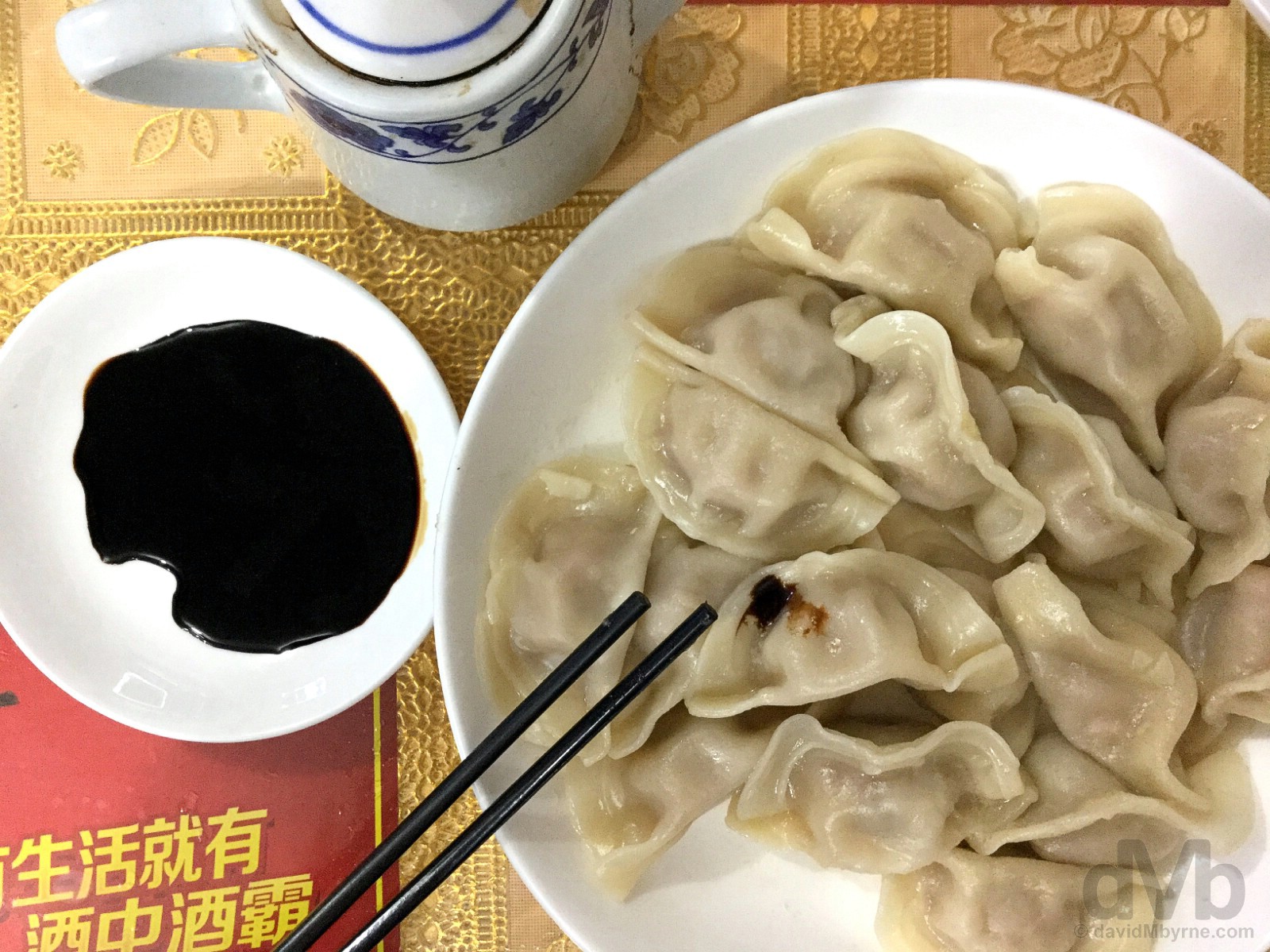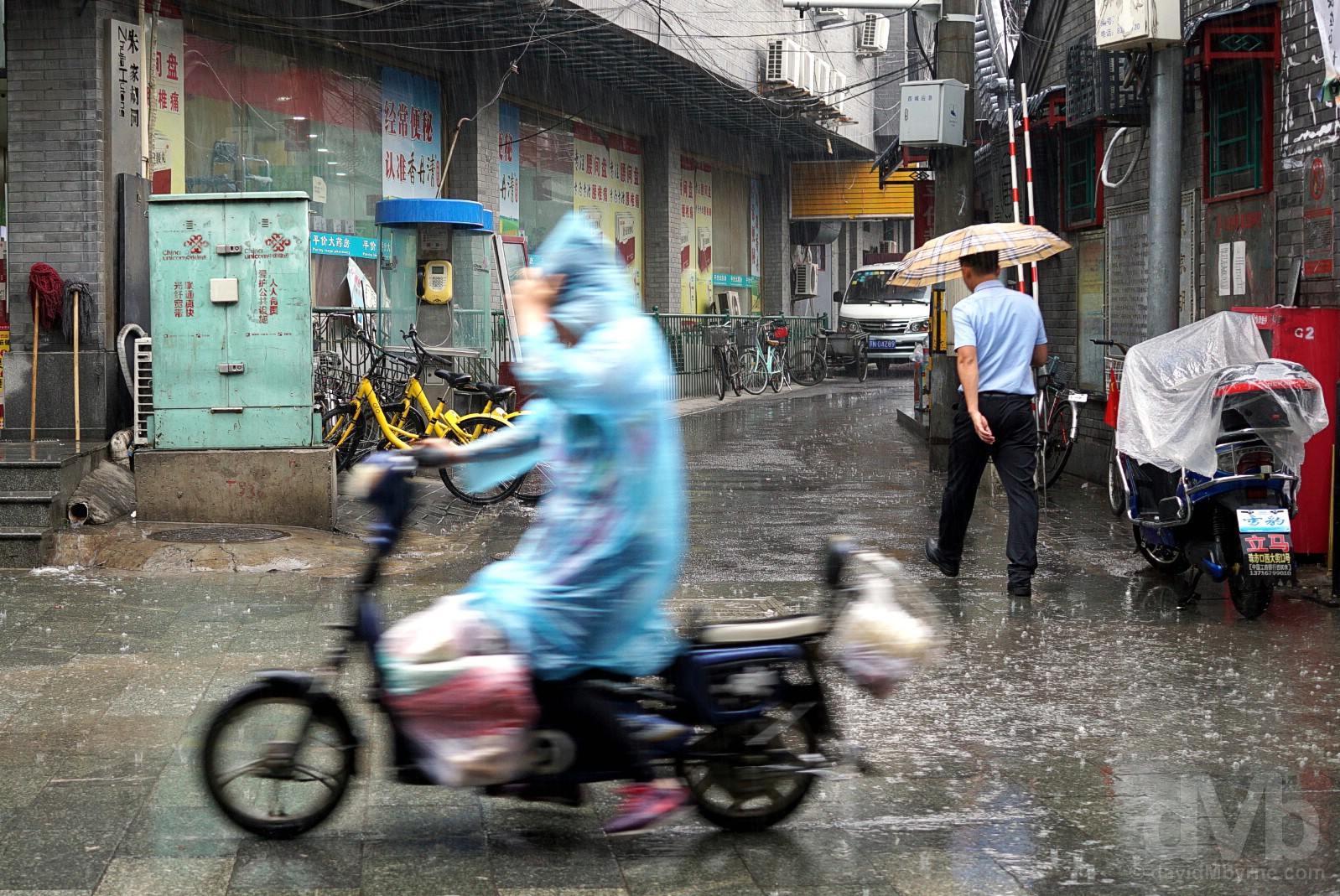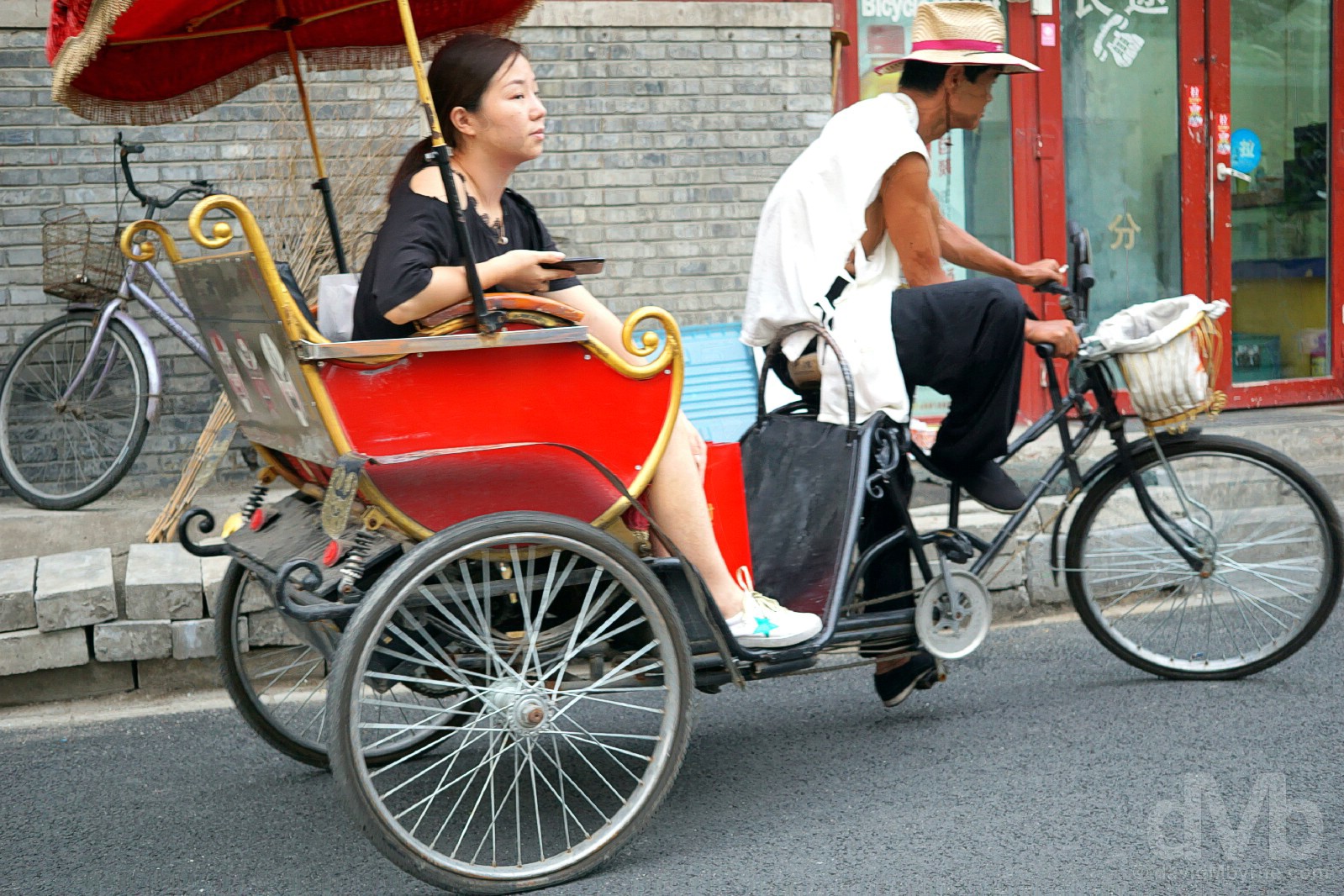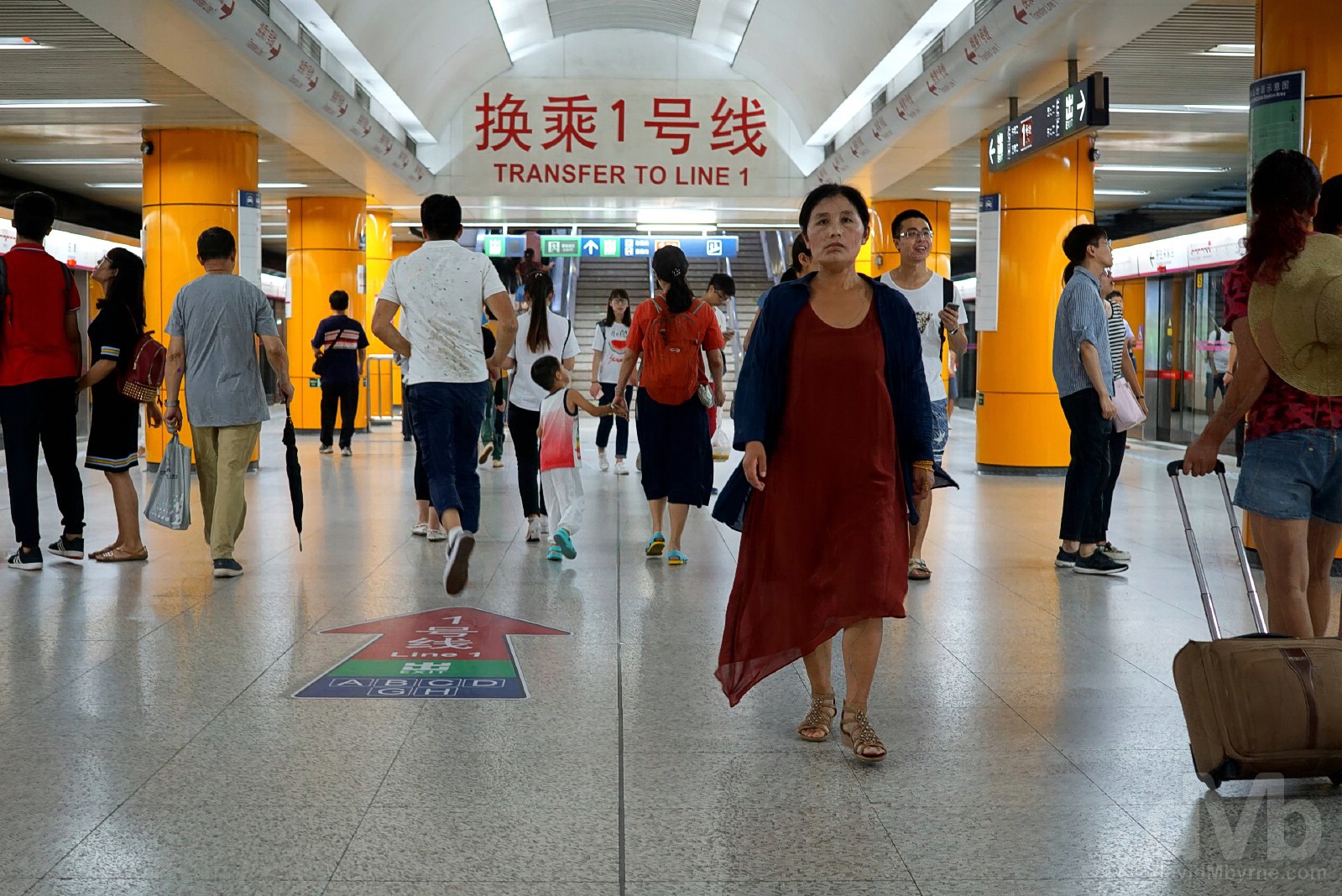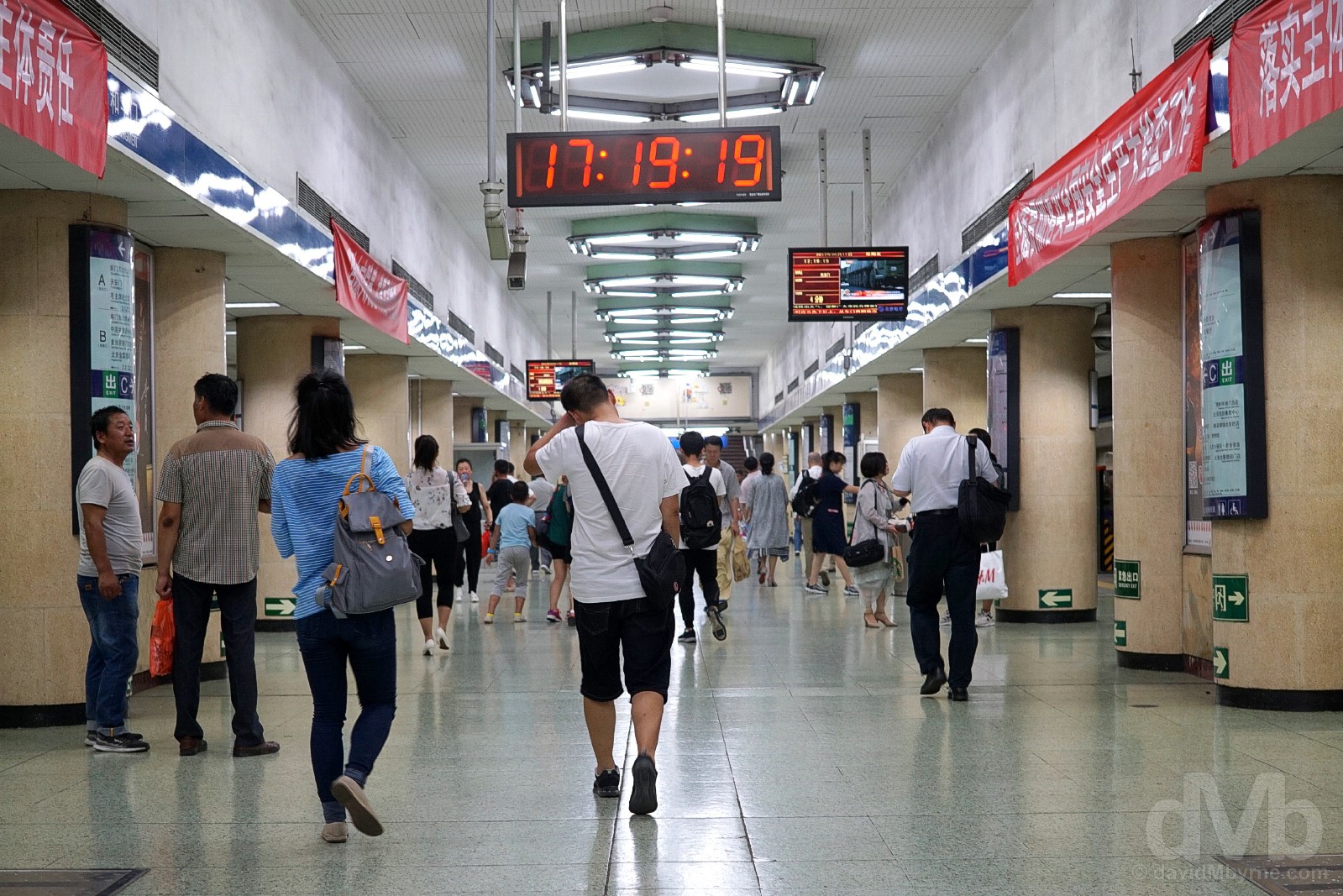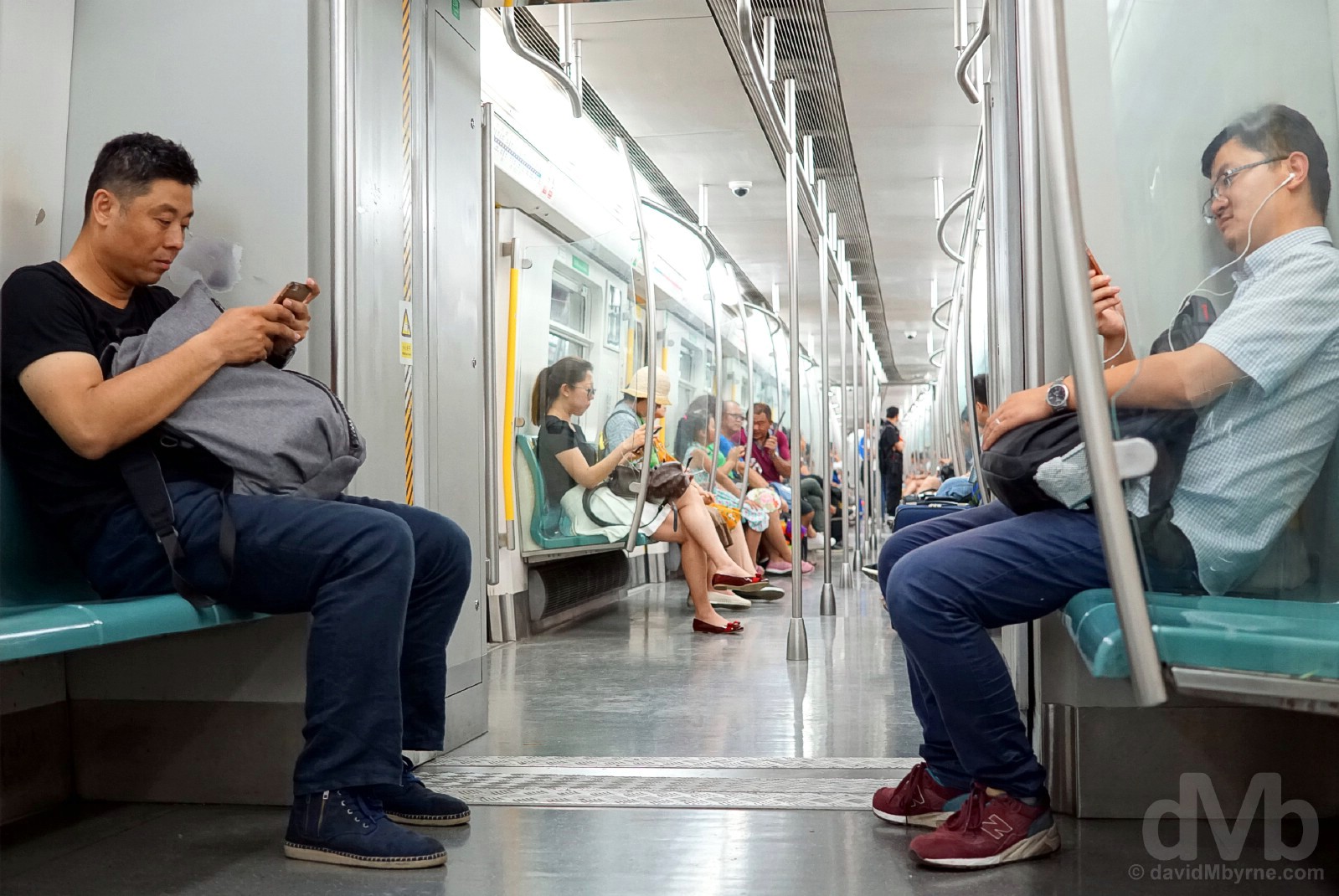Beijing, China (2017)
“It’s Beijing… It’s people getting in my way, always in my fuckin’ way, as is their want; it’s their country, after all, and I’m the impostor. It’s barriers and mass crowd control. It’s a very visible police presence and people in officialdom… seemingly standing around doing absolutely nothing while actually policing subjugation and overseeing mass societal conformity.”
Image || Squirming scorpions in Wangfujing, Beijing. August 12, 2017.
Beijing, China (2017)
It’s Beijing. It’s heat & sweating (in summer). It’s life coming at you from everywhere & having no personal space. It’s queuing. It’s people asking “where are you from?” when they really don’t care one iota and are only interested in selling you stuff. It’s city workers in orange jumpsuits sweeping the streets with a rudimentary witch’s broom and moving piles of dirt from one side of the road to the other. It’s meandering the atmospheric but fast disappearing Hutongs, the old residential lanes. It’s being treated with indifference when dealing with the surly Chinese (although it’s good to know I’m still adept at getting a little wry smile out of them). It’s rancid-smelling public (squat) toilets. It’s that haze that blankets everything and makes one reluctant to take their camera out of their bag (because you just don’t want to capture that shit, or breathe it in).
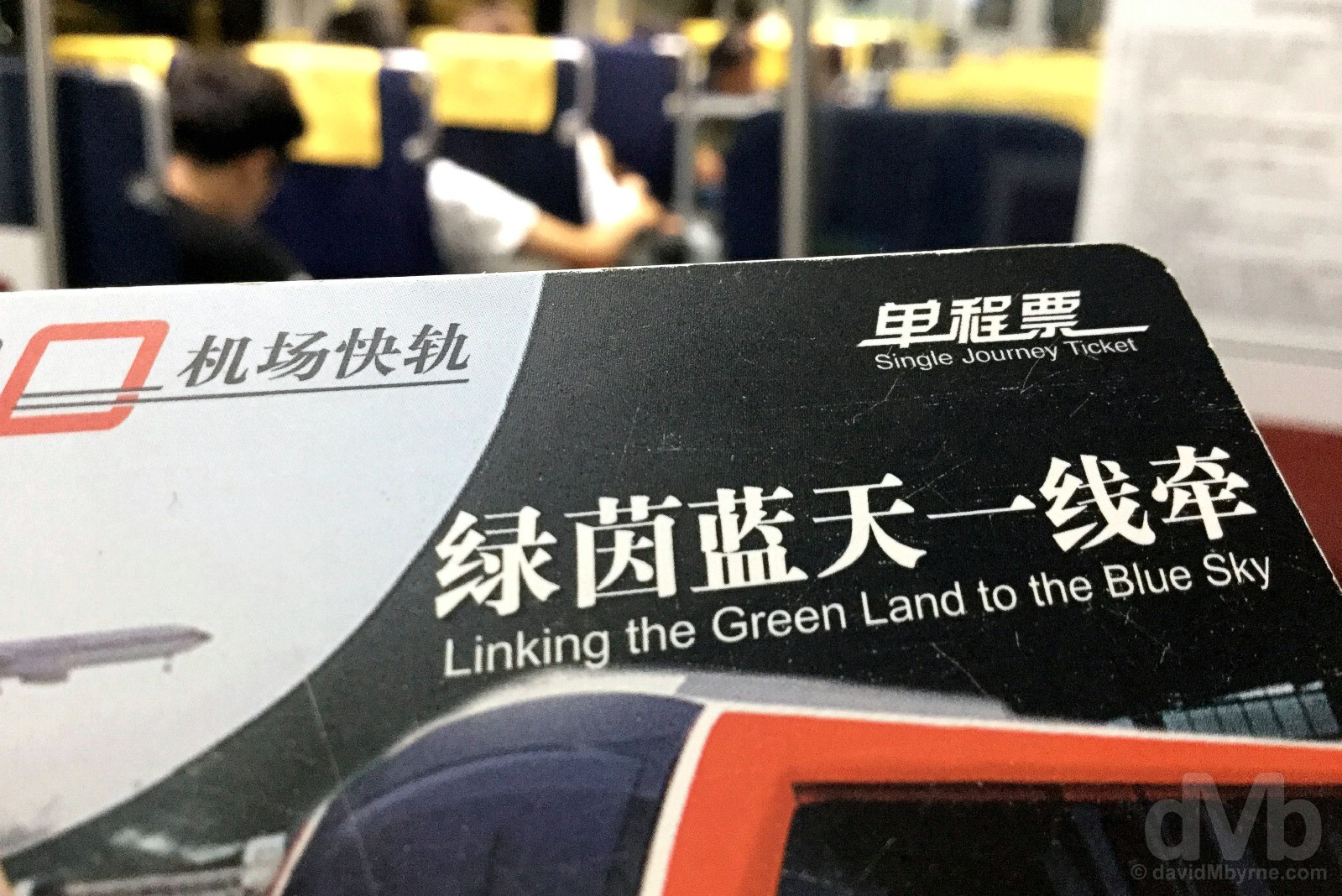
BLUE SKY || On the Airport Express from Beijing International Airport to central Beijing. August 10, 2017. ||
‘Blue Sky.’ Wishful thinking, Beijing. I’ve sampled blue skies in this city before, infamously one of the world’s most polluted, but only in the freezing winter months; suffice to say they are a rarity – if they occur at all – in summer.
It’s an exercise in patience requiring a level of forbearance I’ve long since been unable to summon for this city. It’s the incessant noise of crowds, car horns, buses, bicycle bells, moped beeps as they weave through the crowds, hawkers and the grating language yelled at unnecessarily high pitches from close proximity. It’s people getting in my way, always in my fuckin’ way, as is their want; it’s their country, after all, and I’m the impostor. It’s barriers and mass crowd control. It’s a very visible police presence and people in officialdom, all of whom look like they need to grow into their one-size-fits-all uniform, seemingly standing around doing absolutely nothing while actually policing subjugation & overseeing mass societal conformity. It’s endless security checks and metal detectors (at this stage I’ll never understand why China is so paranoid). It’s the infuriating ‘This site can’t be reached’ message in a browser (life is different when you can’t ‘Google’ things). It’s being grateful you don’t live here (or in China in general). It’s 1 hour closer to home (than Seoul, South Korea, is).
It’s 640ml bottles of beer for less than a euro. It’s one big open-air restaurant, food, real Chinese food, never far away. It’s one roast duck restaurant after another, each and every one claiming to be the original Peking Duck restaurant.
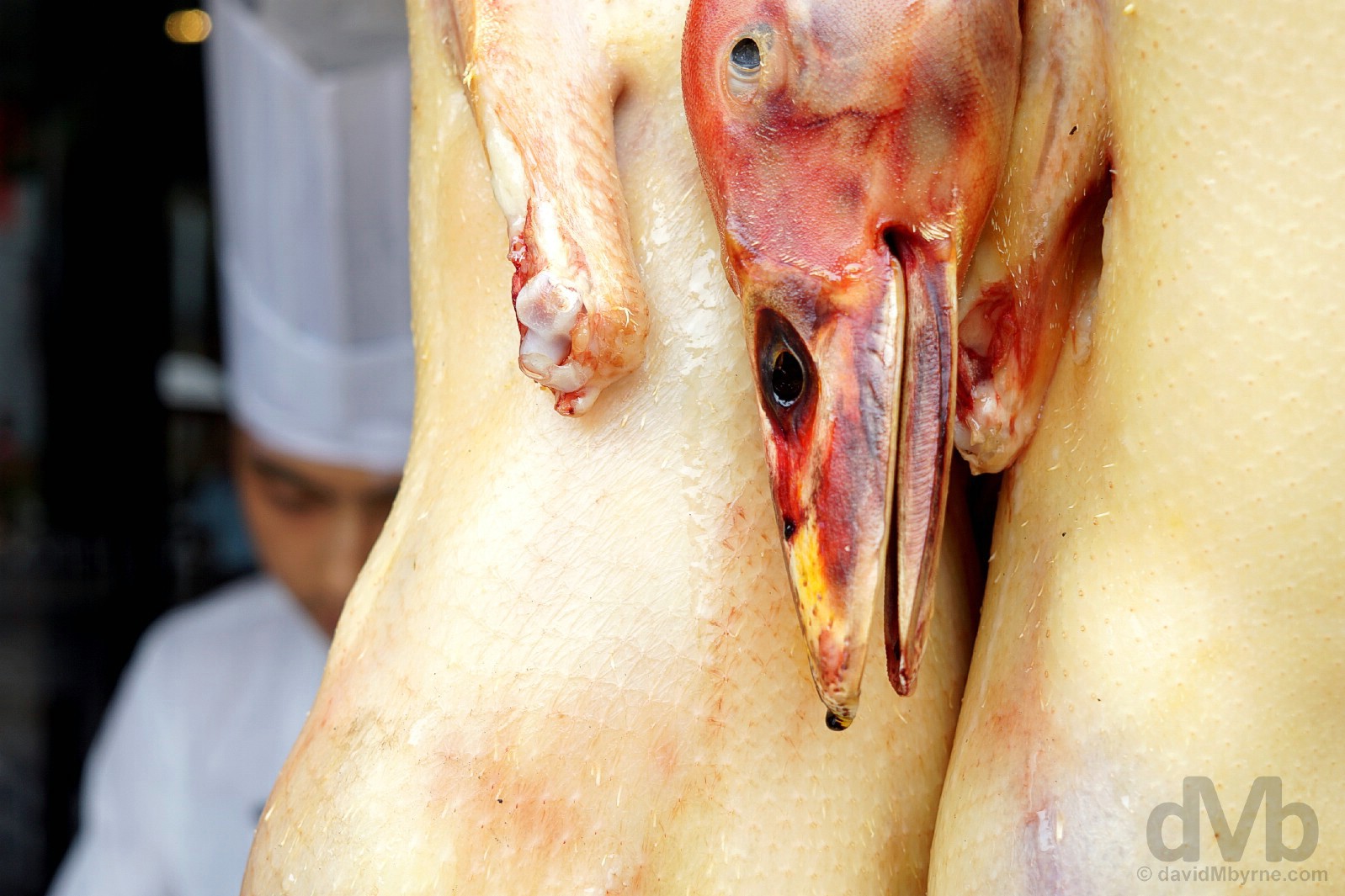
A roast duck restaurant in Qianmen, Beijing. August 12, 201.
It’s insects perched on skewers, some nicely fried, some shockingly squirming, and all ready for consumption.
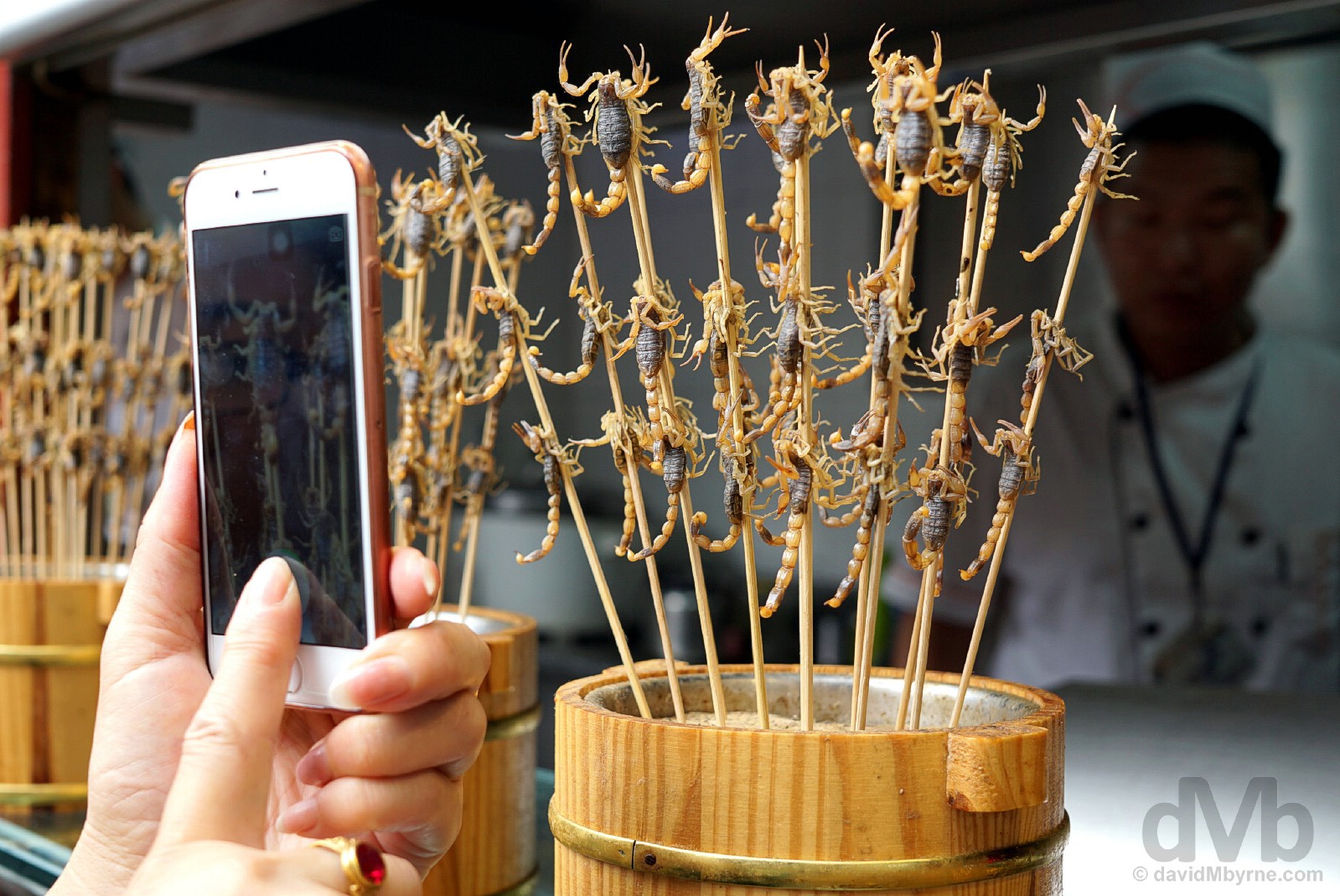
WANGFUJING || In the lanes of Wangfujing, Beijing, China. August 12, 2017. ||
Busy with tourists & locals alike & alive most hours of the day, but especially at night, Wangfujing is where you come to sample such delicacies as fried scorpion, spiders, snakes, cockroaches and whatnot on a skewer. Most are dead, unlike these squirming scorpions, probably Wangfujing’s biggest draw.
It’s silk shops. It’s red lanterns. It’s incessant stares from locals who surely – SURELY – have seen a foreigner before. It’s good-natured solicitations from rickshaw drivers. It’s ancient pharmacies selling weird stuff. It’s the confusing & alien script and the bastardized translation into English that always makes me smile.
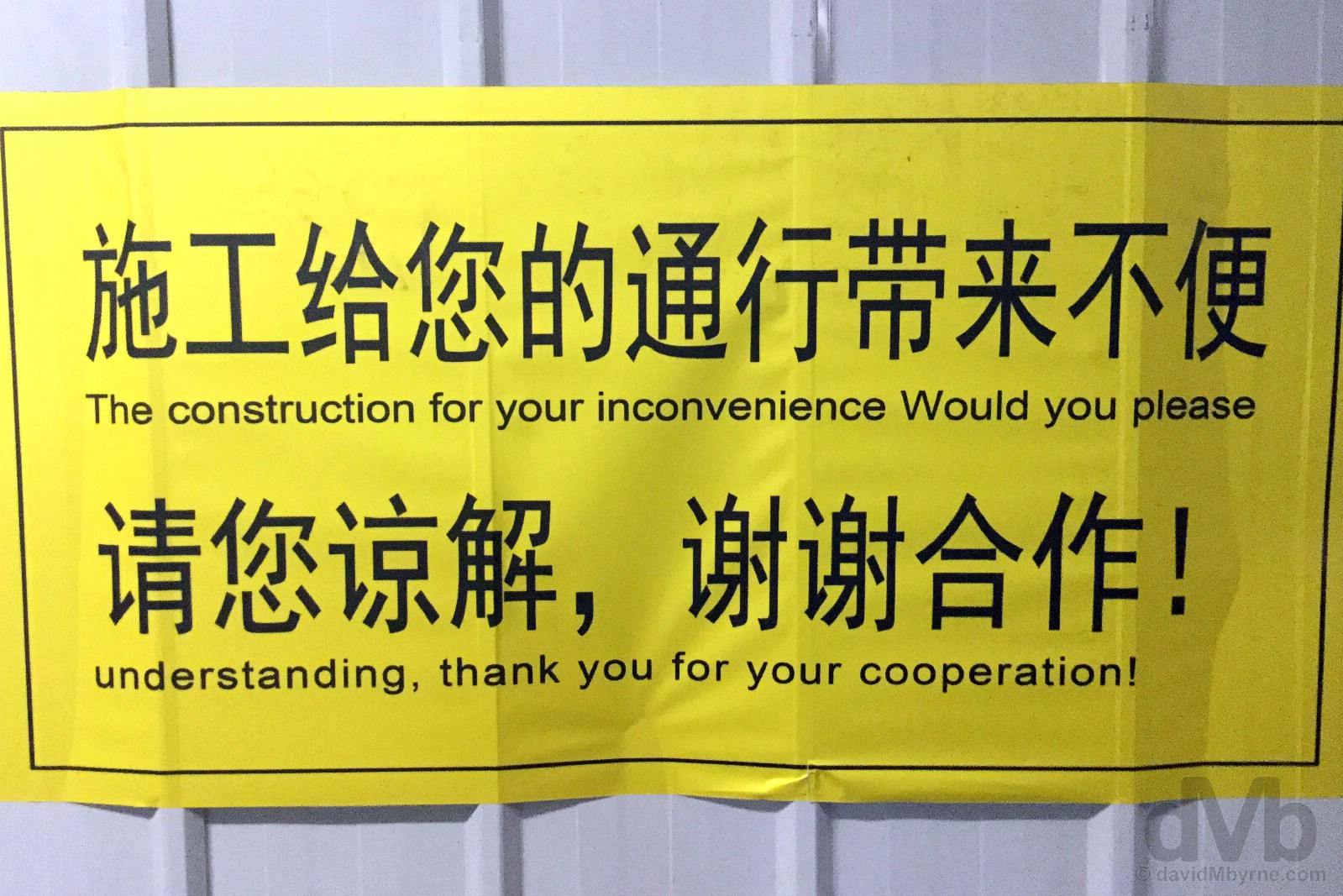
Even Google Translate, if they didn’t block it behind the Great Firewall (they do), would do a better job than this. As is it’s good enough to get the gist, right? Off Tiananmen Square, Beijing, China. August 10, 2017.
It’s familiar sights & familiar, albeit still somewhat strange smells. It’s a bicycle bonanza. It’s suspect traffic manoeuvres and a perceived absence of road rules. It’s crumbling old making way for tacky-looking new. It’s destitute types rummaging through the bins in search of recyclable material. It’s the homeless, always passed out and sheltering in underpasses. It’s a sparkling air-conditioned Gucci & Prada outlet beside some dilapidated & stuffy family-owned convenience store.
It’s basically the same as it always was, the ever-present push to modernise aside, on this my 7th visit to the capital of the world’s superpower wannabe, somewhere I always seem to visit these days in order to get elsewhere, this time North Korea – the Beijing box has been well ticked over the years and if not for elsewhere I’d have no reason to visit these days. It’s a facilitator, but an inconvenience. It’s a necessary evil. It’s Beijing.
Day 1 || August 10 2017
“The volume – both people & noise – in here, as it always is (I’m well acquainted with this place), was up to max with personal space at an all-too-typical premium.”
Image || On the vast concourse fronting Beijing Train Station, Beijing. August 10, 2017.
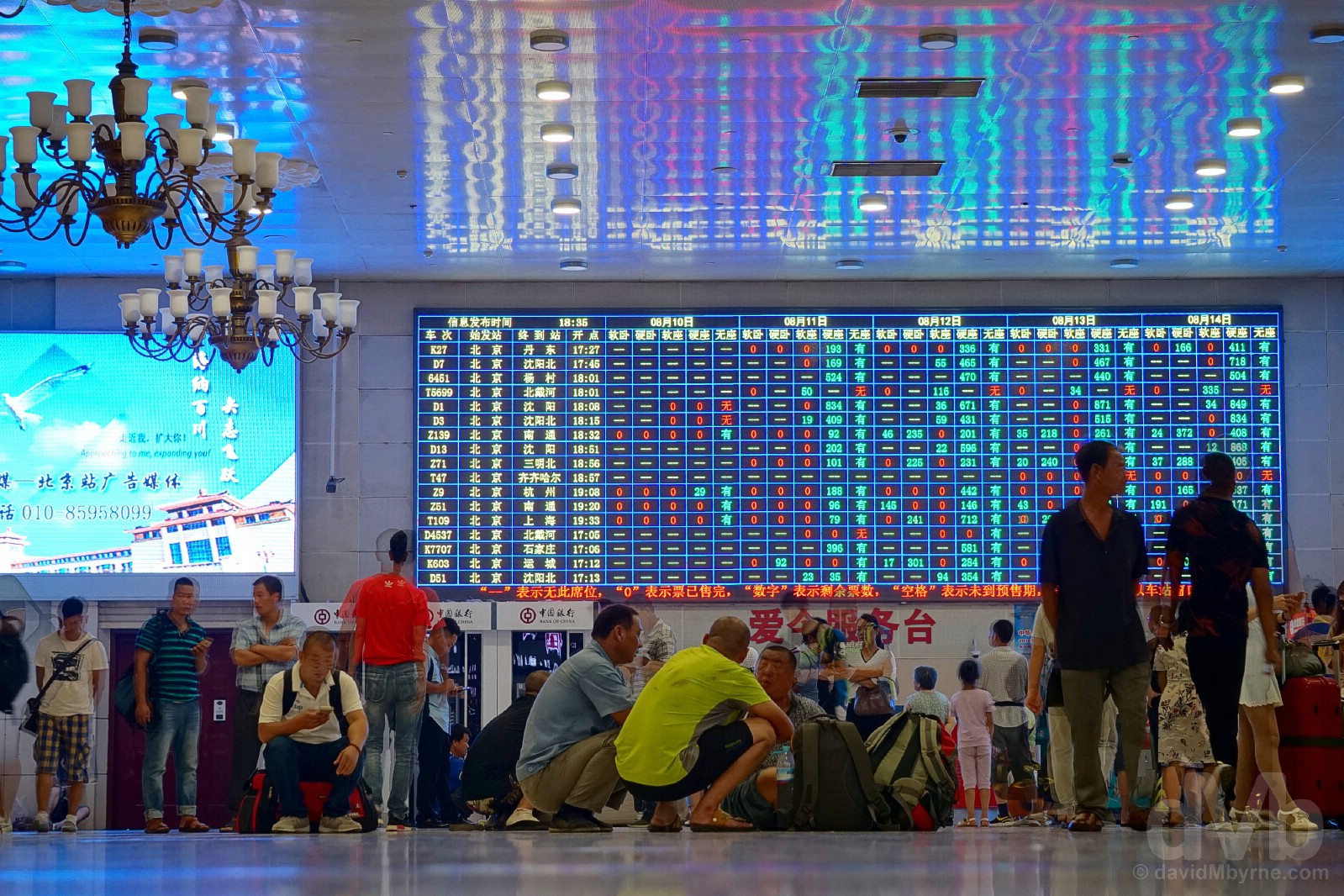
BEIJING RAILWAY STATION || In the ticketing hall of Beijing Railway Station, Beijing, China. August 10, 2017. ||
The first thing I did on this trip to Beijing, and about the only essential on the Beijing 2017 to-do list, was stand in a queue for an hour to get train tickets for train trip to and from Dandong, the Chinese border town with North Korea and from where my trip into the Hermit Kingdom originates. The volume – both people & noise – in here, as it always is (I’m well acquainted with this place), was up to max with personal space at an all-too-typical premium. The board said there were no sleeper tickets available on board the K27 for the 14-hour overnight trip in 2 days’ time. True that for my preferred class of travel (soft sleeper, something of a splurge), but they found room for me in hard sleeper, a perfectly acceptable alternative and the class of Chinese train travel I’m most experienced with. That smile-inducing Irish charm again.
Day 2 || August 11 2017
“Yes, the complex is large, but it’s still no match for the Chinese. Functioning only as part of a collective, they travel, both here at home and when abroad, in huge numbers (60,000-plus descend on the Summer Palace every day during summer, or around about now), they travel en masse and collectively they make quite the racket.”
Image || Impressive calligraphy in the grounds of the Summer Palace, Beijing. August 11, 2017.
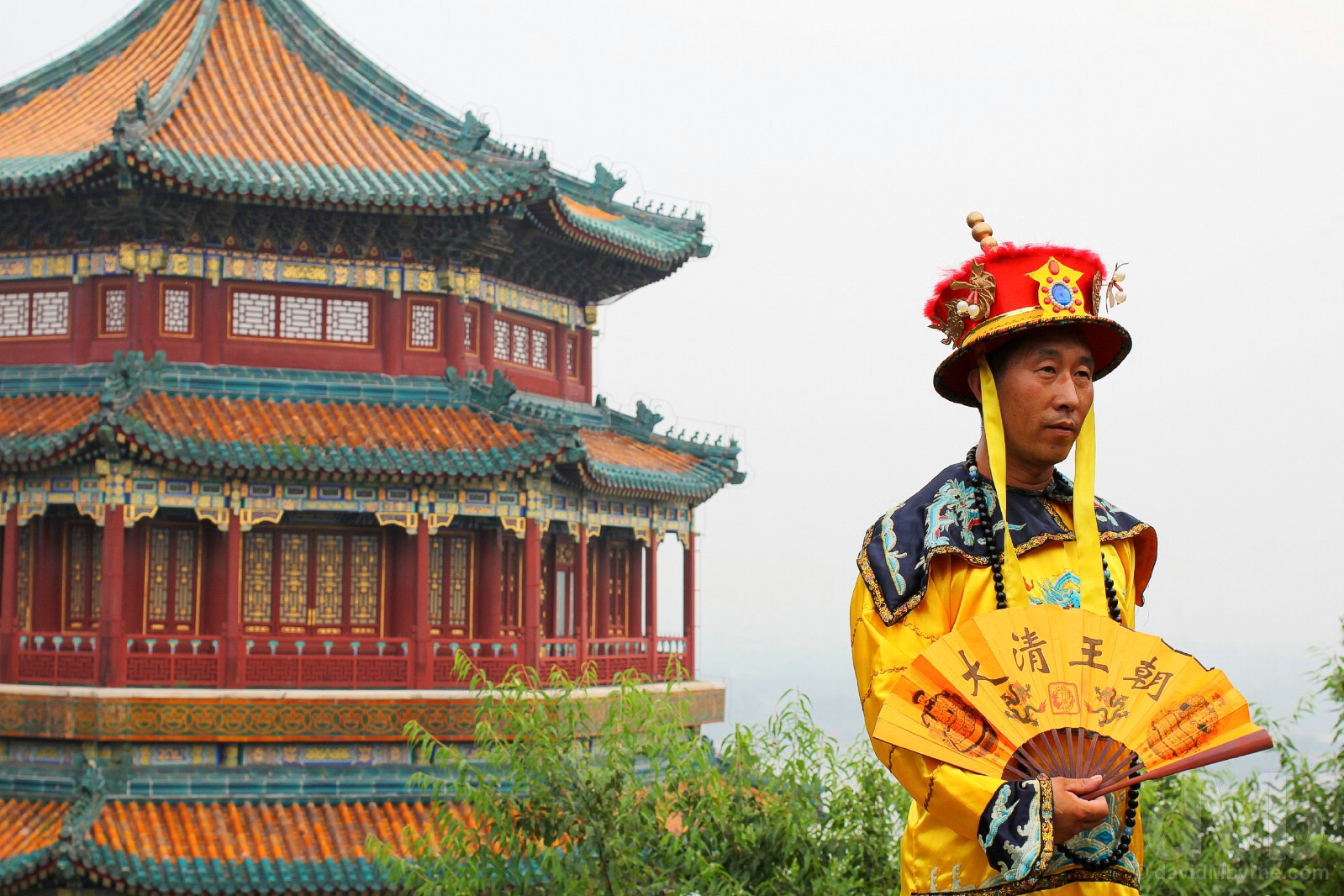
Overlooking the Tower of Buddhist Incense on Longevity Hill in the grounds of the Summer Palace, Beijing, China. August 11, 2017.
Summer Palace
Initially built in 1750, when it was named the Garden of Clear Ripples, this was an imperial garden and summer residence, a place of reprieve for the royal family of the Chinese Qing Dynasty (1644-1912) who would come here to escape the insufferable heat of the Forbidden City in central Beijing, about 10 kilometers away. And a rather large reprieve it was too – covering almost 3 km², 75% of which is water in the form of Kunming Lake, the Summer Palace combined political and administrative, residential, spiritual, and recreational functions within a largely man-made landscape of lakes and mountains and all in accordance with the Chinese philosophy of balancing the works of man with nature. Razed by Anglo-French forces in 1860, rebuilt in 1888, when it was renamed the Summer Palace, damaged again in 1900 during the Boxer Rebellion, opened as a public park in 1924 and awarded UNESCO World Heritage status in 1986, today the site somehow, given the vast numbers that descend on it daily, manages to conserve over 70,000 m² of palaces, halls, pagodas, temples, bridges, pavilions and walled gardens.
– UNESCO commenting on Summer Palace, an Imperial Garden in Beijing
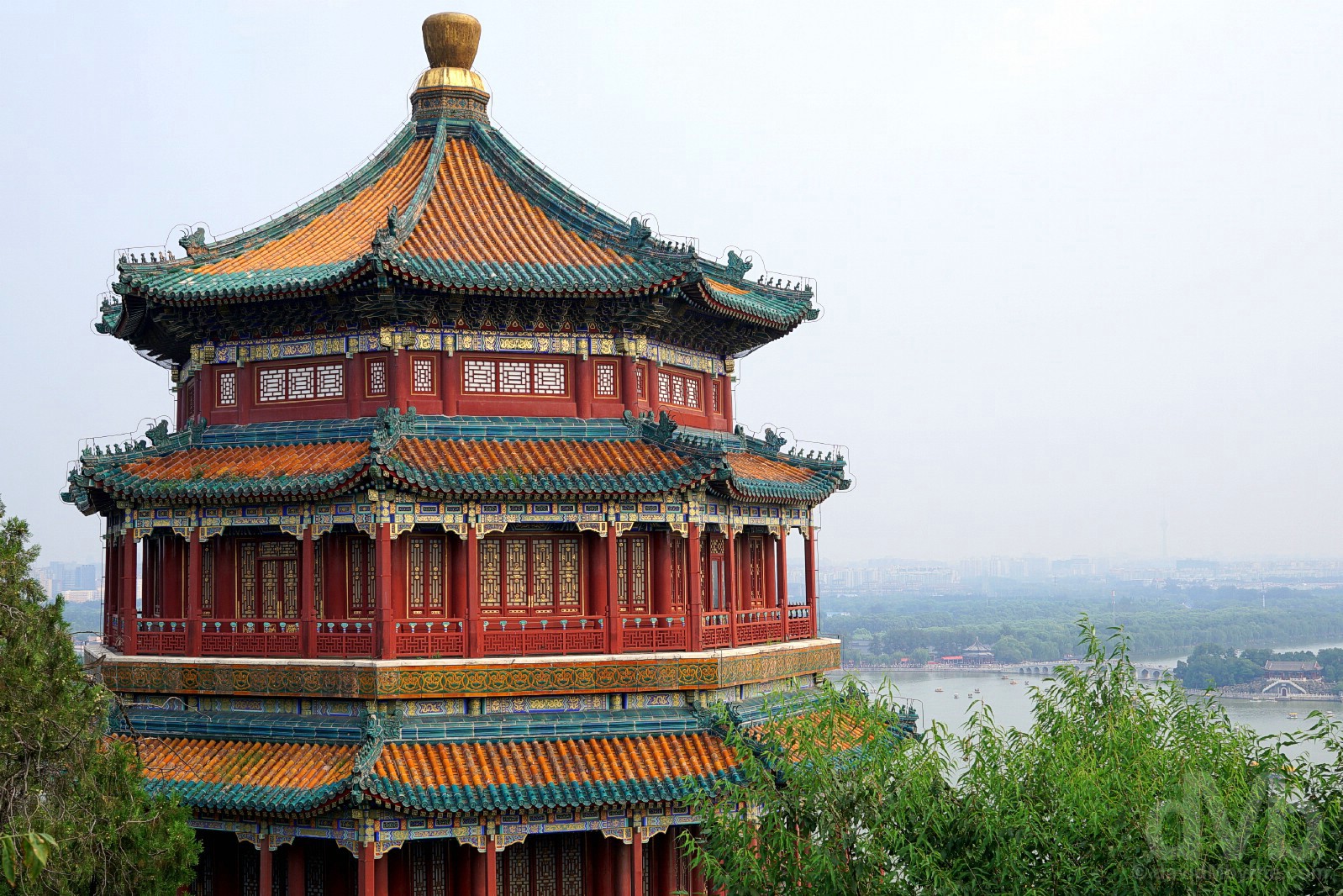
LONGEVITY HILL & KUNMING LAKE || The Tower of Buddhist Incense on Longevity Hill in the grounds of the Summer Palace, Beijing, China. August 11, 2017. ||
The Summer Palace complex is dominated by two man-made features, Longevity Hill and Kunming Lake; the soil excavated during the creation of the latter was used to create the former. Longevity Hill, split into lake-fronting Front Hill & Back Hill, is about 60 metres high and you reach its summit by passing through a series of impressive halls and pavilions on Back Hill, sweaty work in this heat as you join the hordes snaking through the corridors linking the various building and pavilions. Once at the top you’re overlooking the lake, seen in the background, and the Tower of Buddhist Incense, an 8-storey pagoda, a rather impressive structure dominating Front Hill that is also the highest building in the Summer Palace complex.
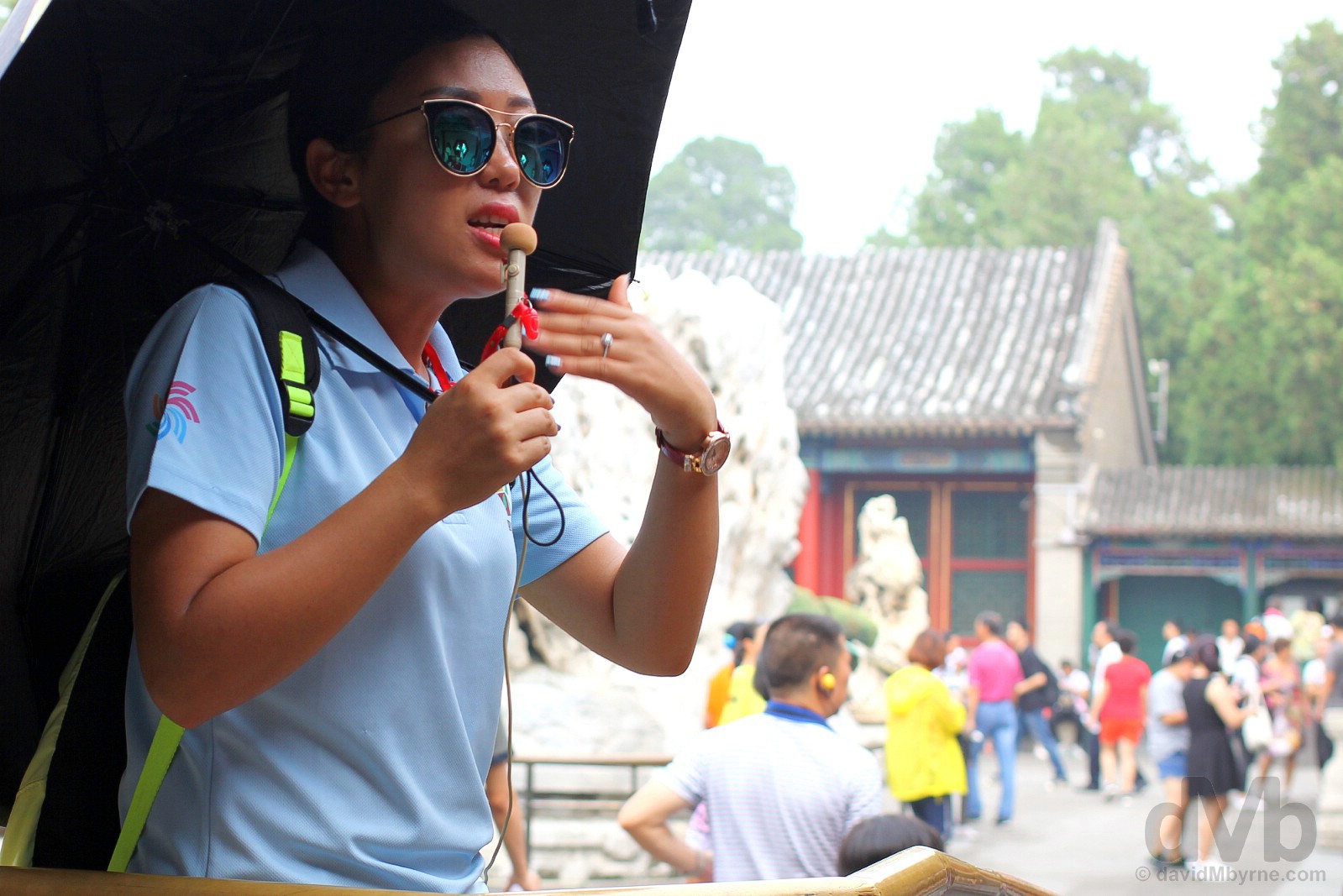
A COLLECTIVE || A tour guide, her hip-fixed mobile speaker out of shot (but not earshot), only adding to the noise in the grounds of the Summer Palace, Beijing, China. August 11, 2017. ||
With names like the Hall of Joy and Longevity, the Pavilion of Precious Clouds and the Garden of Harmonious Pleasures, one could be forgiven for thinking a visit to the Summer Palace would be a relaxing endeavour. Wrong. It’s anything but. Yes, the complex is large, but it’s still no match for the Chinese. Functioning only as part of a collective, they travel, both here at home and when abroad, in huge numbers (60,000-plus descend on the Summer Palace every day during summer, or around about now), they travel en masse and collectively they make quite the racket. And yes, just like they do when they are not at home, they diligently follow the tour guide flag; the concept of independent travel is as alien to the Chinese as tour group-based travel is to me. Best bring a towel, for the sweat, and sharp elbows & ear plugs, for the Chinese.
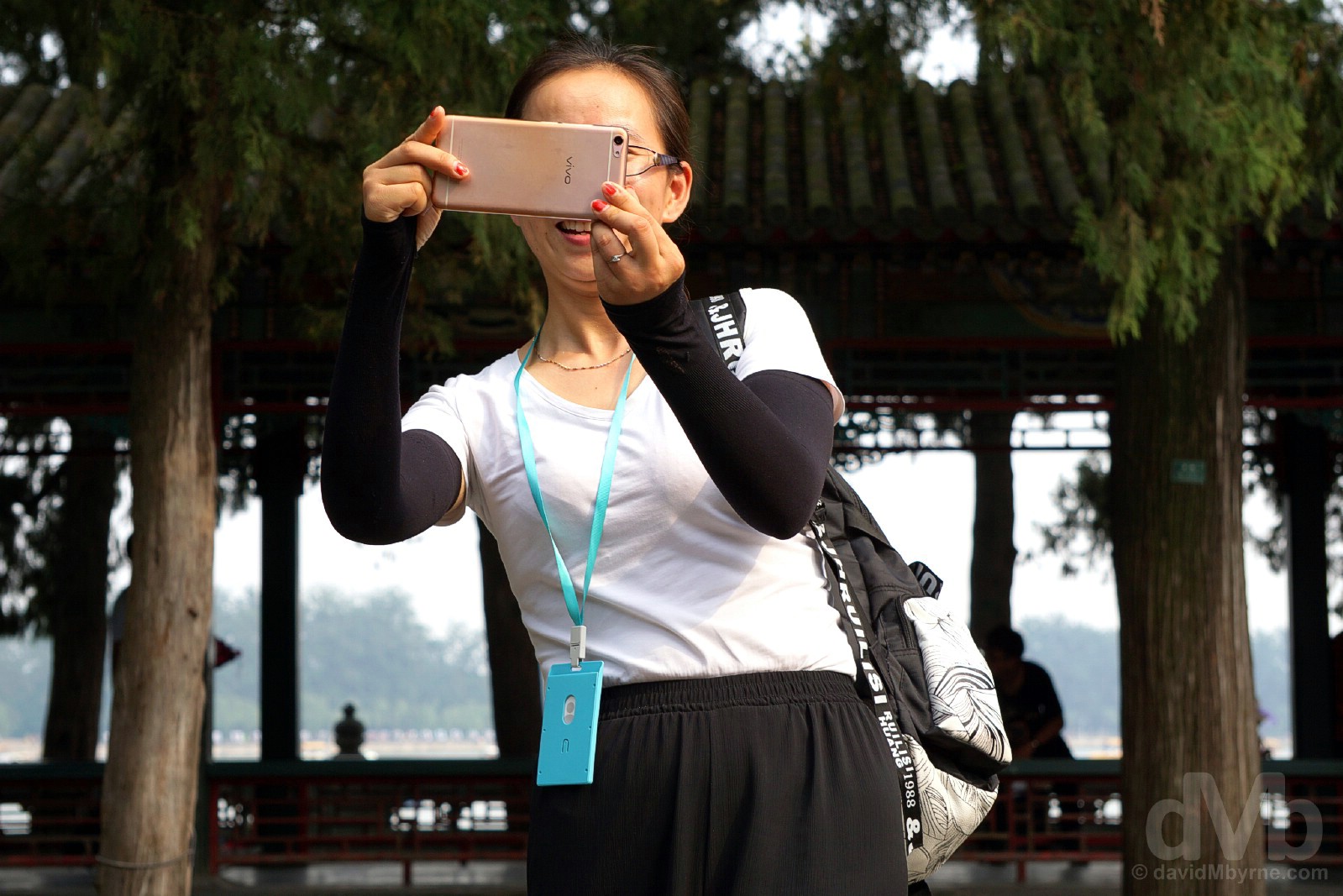
ROCK STAR || In the grounds of the Summer Palace in Beijing, China. August 11, 2017. ||
I had almost forgotten how China can leave you feeling like a rock star, being a foreigner among a crowd of Chinese all that’s needed to ensure you’re approached with requests from curious locals to have their picture taken with you. It happened a few times today and on this occasion, when posing with three teenage males (it’s always adolescents), I captured the scene from my perspective.
A few more captures today when dealing with the heat & crowds in the grounds of the Summer Palace.
Day 3 || August 12 2017
“It’s bucketin’ down in Beijing today… I was going to explore a few neighbourhood hutongs to kill some time before boarding the 14-hour overnight train, but that would just be folly in these conditions.”
Image || Bucketin’ down. Rain in the Qianmen district of Beijing. August 12, 2017.
It’s bucketin’ down in Beijing today, departure day for Dandong in Liaoning province, the border town for trips into North Korea. I was going to explore a few neighbourhood hutongs to kill some time before boarding the 14-hour overnight train, but that would just be folly in these conditions. And it’s not like I haven’t done just that – explore the hutongs – over the years. I have, many times, including yesterday on the way back from the Summer Palace.
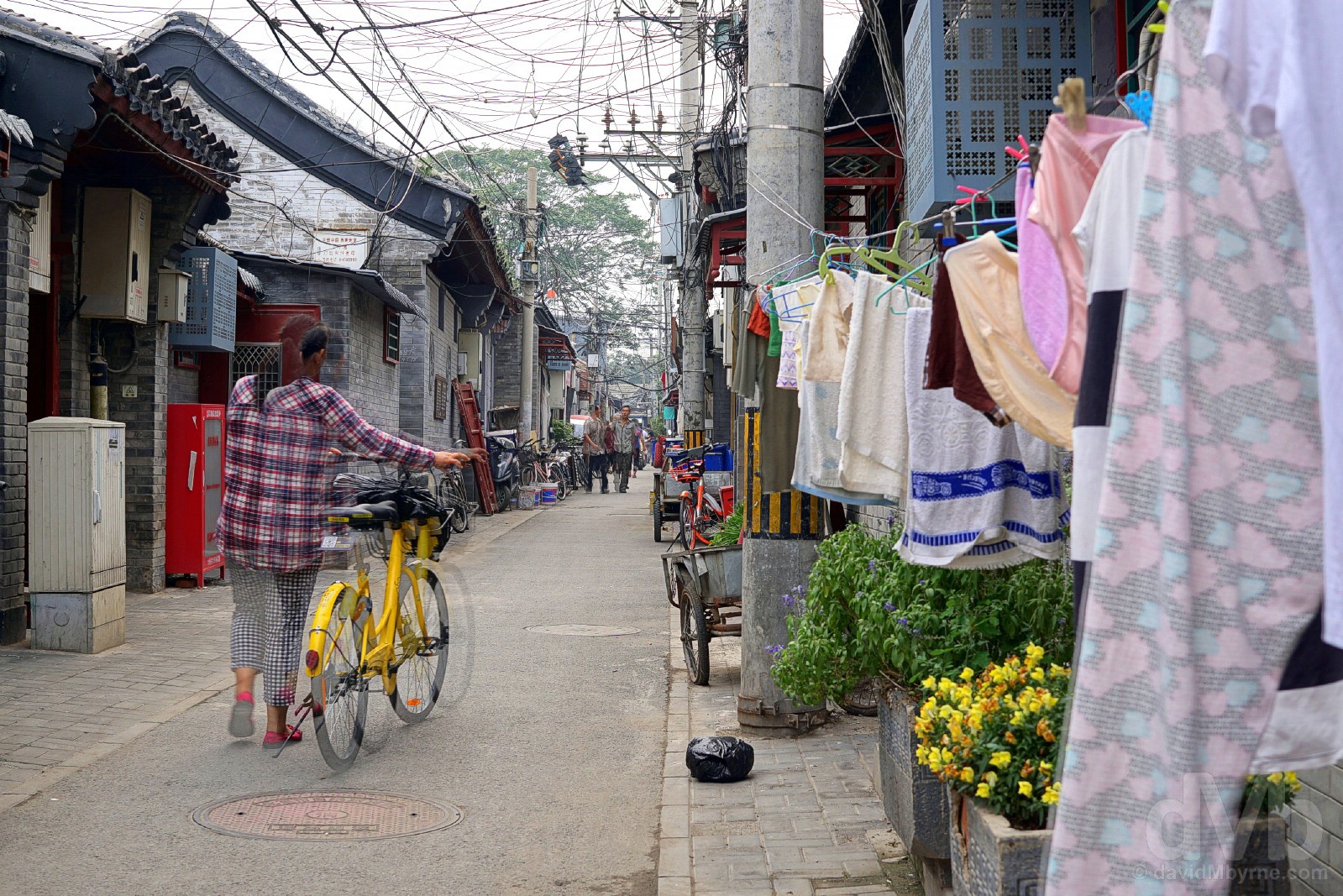
QIANMEN HUTONG || A hutong in the Qianmen district of Beijing, China. August 11, 2017. ||
The Qianmen district of Beijing is a central district of pedestrian streets and narrow alleyways full of traditional Chinese traders and surprises. I always call this area of the city home when I’m in Beijing & in the push for modernisation it’s Qianmen more than any other area that has been transformed the most in recent years – it’s virtually unrecognisable from how I remember it being in 2004 on my first visit to the city, was one big building/construction site when I was here in 2006 and again in 2008, 6 months ahead of the Beijing Olympics, and has been the ‘new’ Qianmen ever since. That said, not all of the district has seen the wrecking ball and there are still many a hutong to be found and explored. Traditional Chinese residential alleys synonymous with poverty & bad plumbing, the hutong may conflict with the vision of modern China Beijing is trying hard to project, but, and while large swathes of them have been destroyed in the recent past, they’ll be around for a long while yet.
More captures from the lanes of Qianmen.
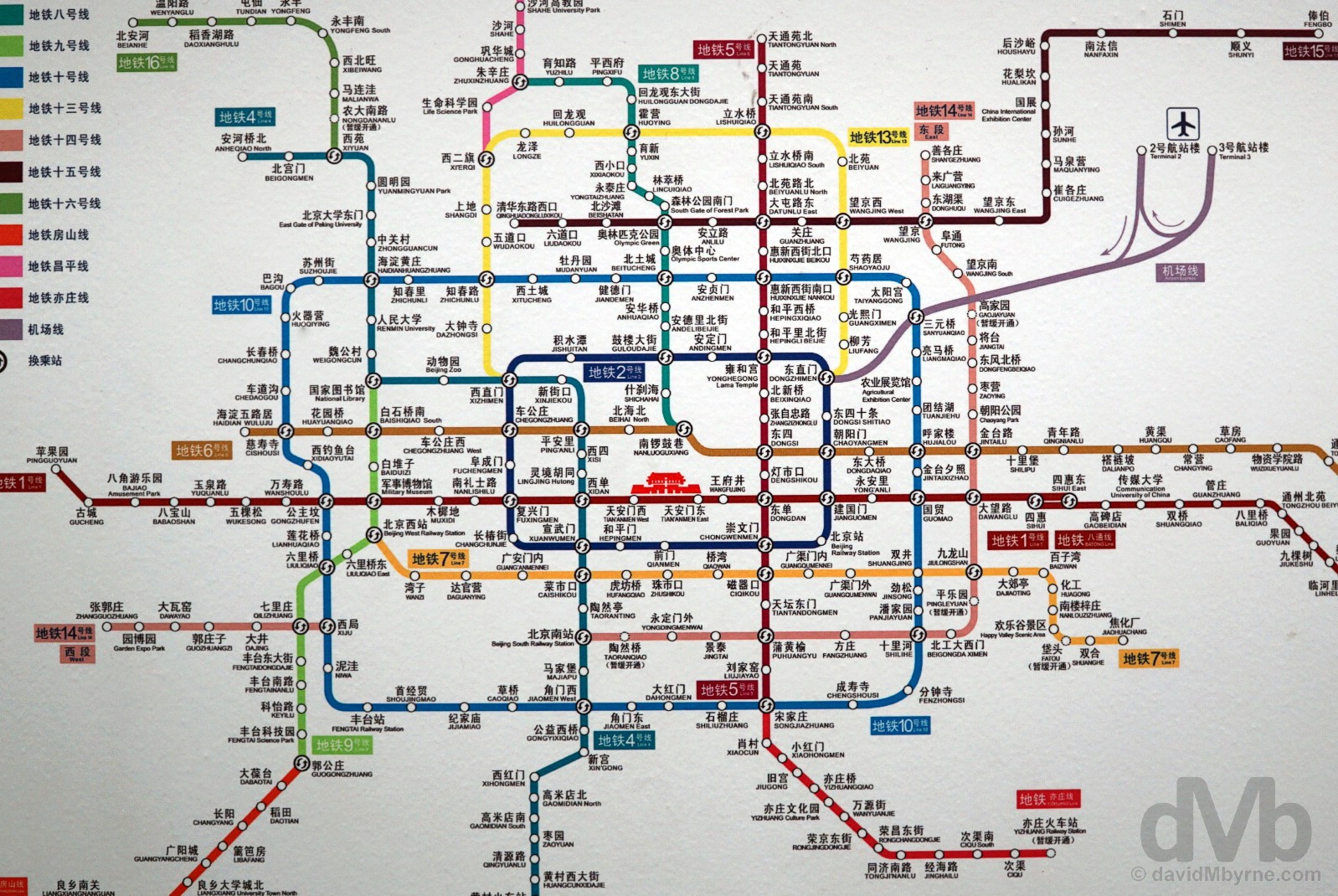
BEIJING METRO || A Beijing Metro map on the platform of Beigongmen Metro Station (Line 4), Beijing, China. August 11, 2017. ||
Of all the changes to befall Beijing of late nothing quite tops its metro system. I remember the Beijing Metro being effectively two lines – east-to-west red Line 1 & the central circle loop of blue Line 2; I specifically remember commenting on the simplicity of the city’s metro system to service such a large city on my first visit in 2004. Then the Olympics came calling, billions were spent, and continue to be spent, and the system exploded to what it is today, the world’s busiest metro system in terms of annual ridership – over 3.6 billion trips were taken in 2016 for an average of almost 10 million rides a day. But that’s still not enough as the existing 575-kilometre-long network of tracks, the 2nd longest subway system in the world after Shanghai, still cannot adequately meet the city’s mass transit needs with yet more extensive expansion plans calling for 1,000 kilometres of track to be online to service some 18.5 million trips a day by 2020.
More captures while riding the Beijing Metro over the last few days.
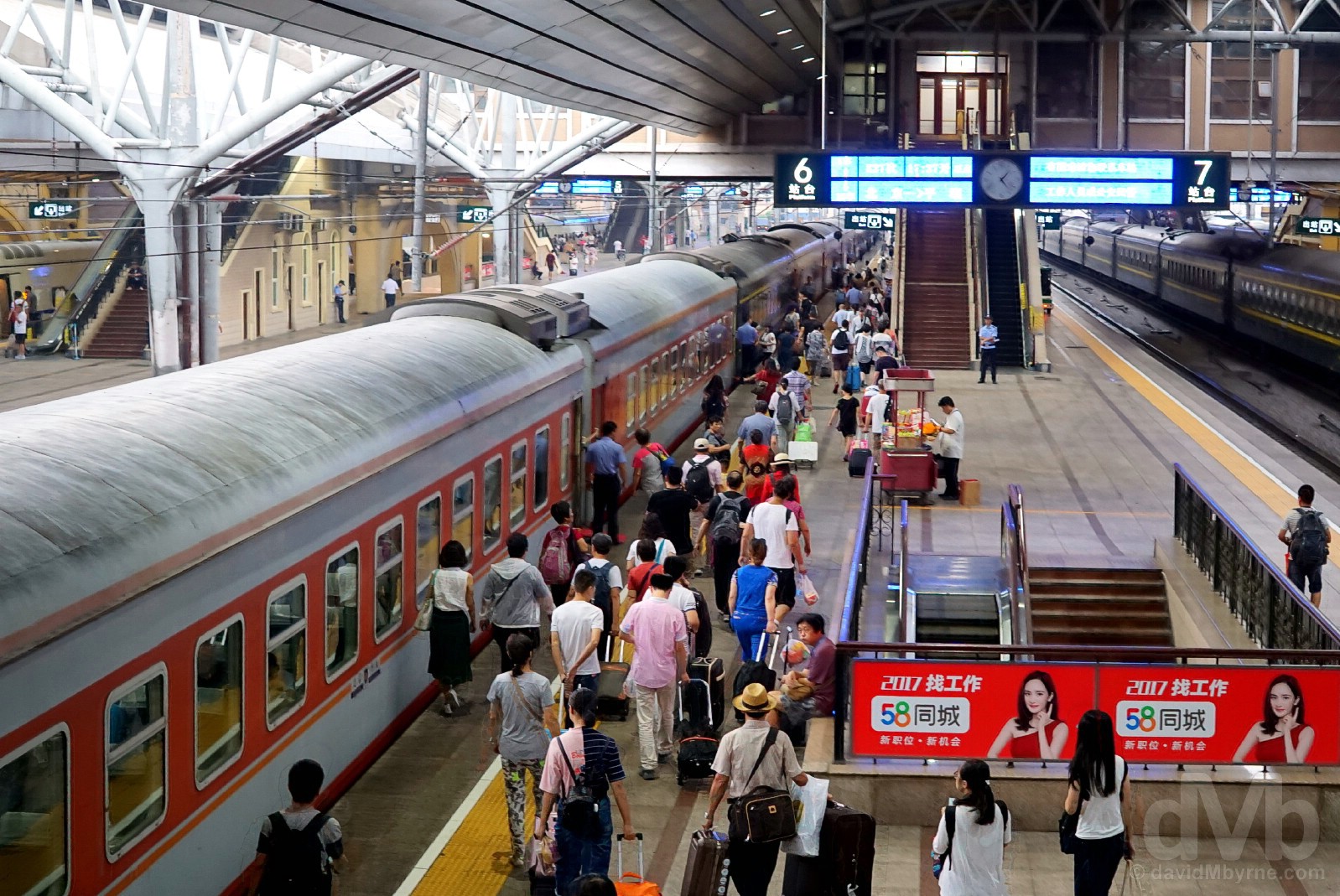
All aboard! My latest departure from Beijing. The 14-hour overnight K27 train destined for Dandong on platform 6 of Beijing Train Station, a welcome sight having just emerged unscathed from the latest scrum of people. Beijing, China. August 12, 2017.



